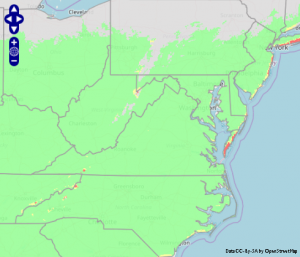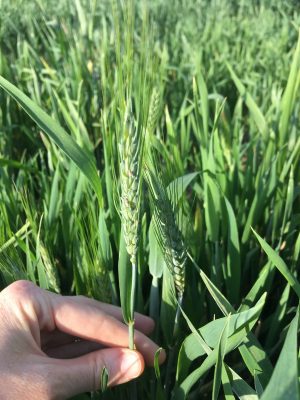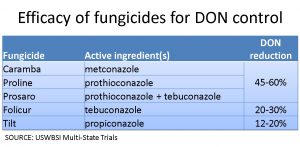As wheat starts flowering in the region, it is time to consider whether or not to make a fungicide application for Fusarium head blight (FHB). Currently, risk is low in most parts of Virginia. There are a few exceptions, including portions of the Eastern Shore, where risk is moderate to high.
The most effective fungicides for control of FHB and DON are Caramba (metconazole), Prosaro (prothioconazole + tebuconazole), and Proline (prothioconazole). Less expensive triazoles such as Tilt (propiconazole) and Folicur (tebuconazole) will provide some control, but if FHB risk is high these fungicides are unlikely to prevent unacceptable levels of DON contamination. Keep in mind that fungicides containing a strobilurin should not be applied after the flag leaf stage since they can increase DON contamination.

Current FHB risk in Virginia and the surrounding region. Green, yellow, and red indicate low, moderate, and high risk, respectively. FHB risk can be monitored using the Fusarium Risk Assessment Tool (http://www.wheatscab.psu.edu/).
To maximize their effectiveness, fungicides for FHB and DON control should be applied at early flowering or up to one week later. Fungicides that control FHB and DON will also control foliar diseases including powdery mildew, leaf rust, stripe rust, and leaf blotch. Stripe rust has been found in NC and was recently reported from a single field in Warsaw, VA so be sure to scout susceptible varieties for this disease. For specific wheat disease management recommendations or assistance with disease identification, contact Dr. Hillary L. Mehl (hlmehl@vt.edu).


